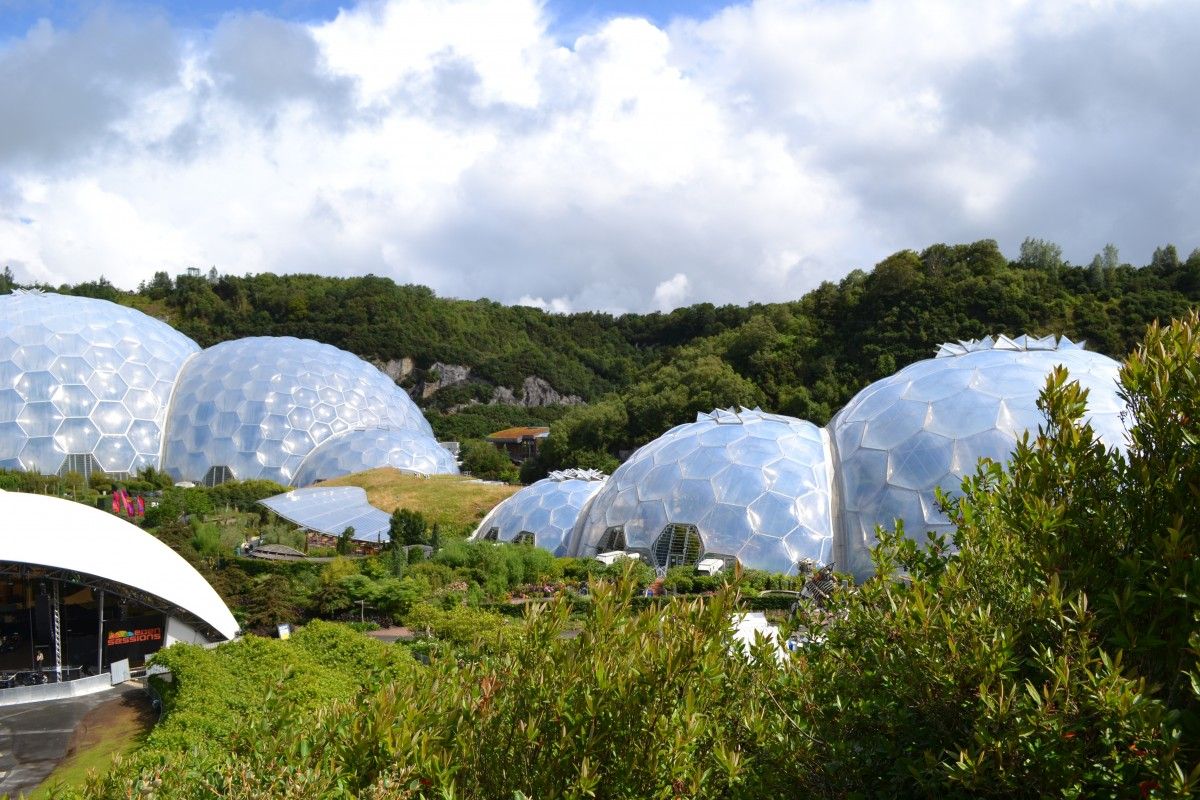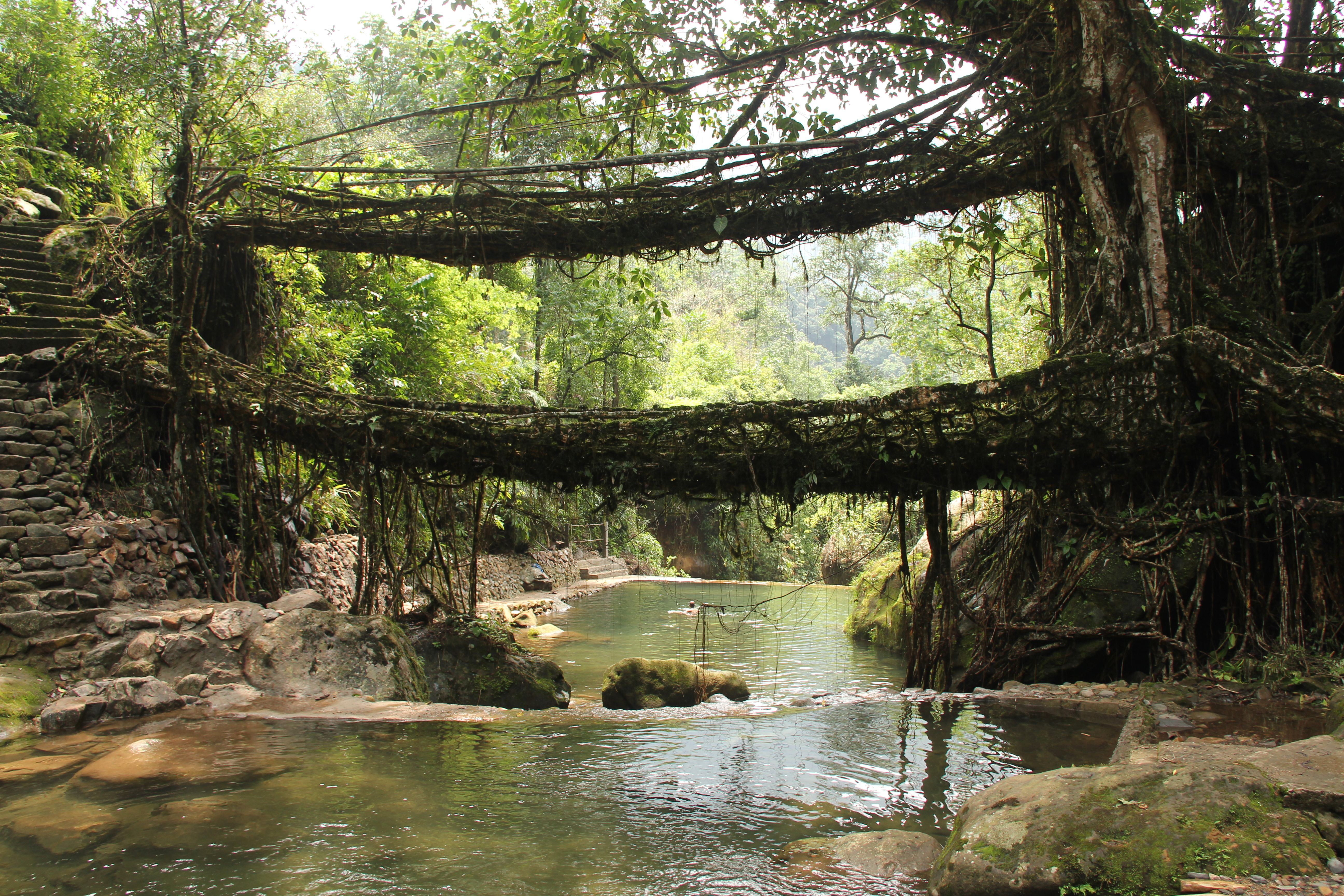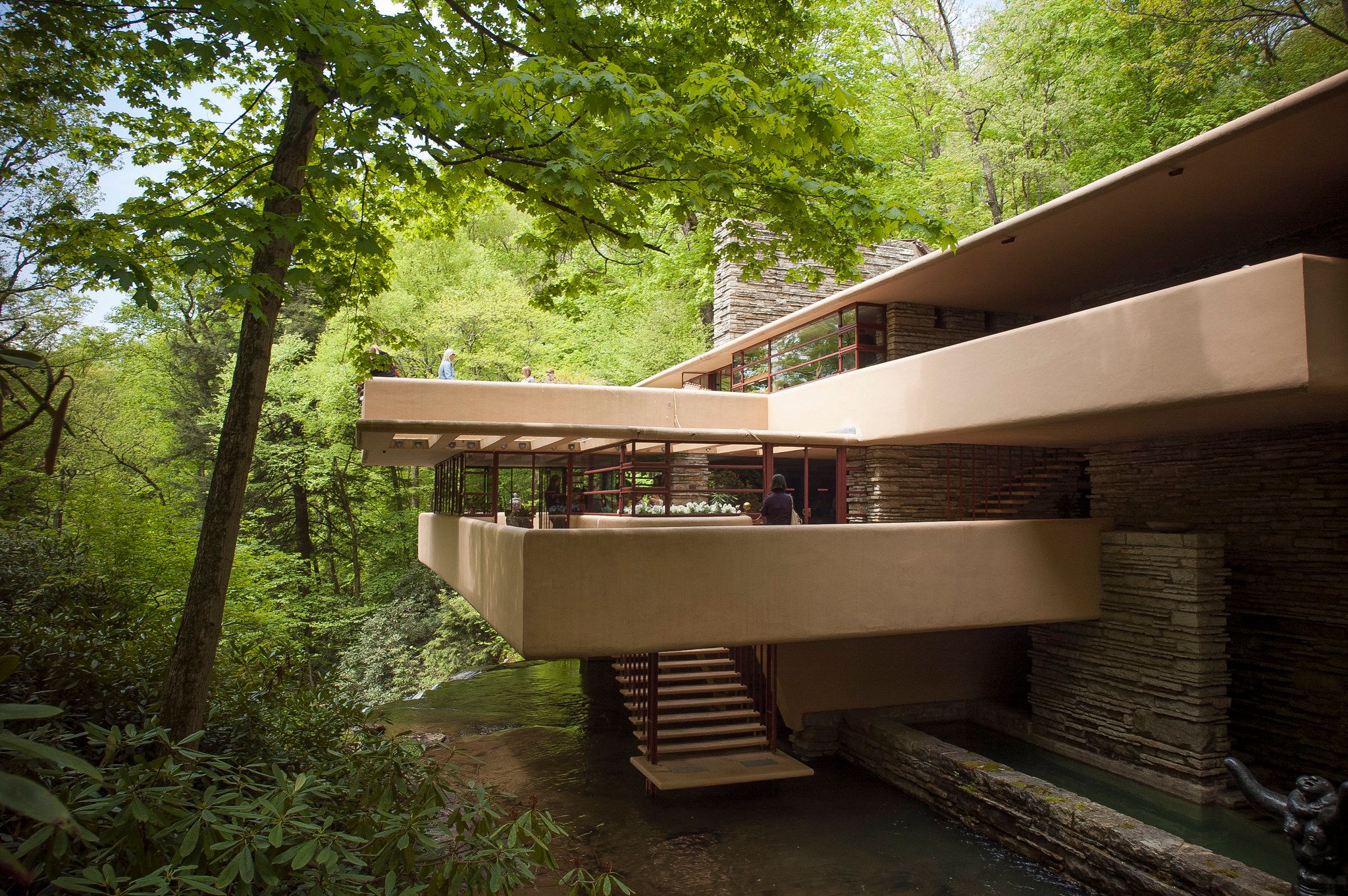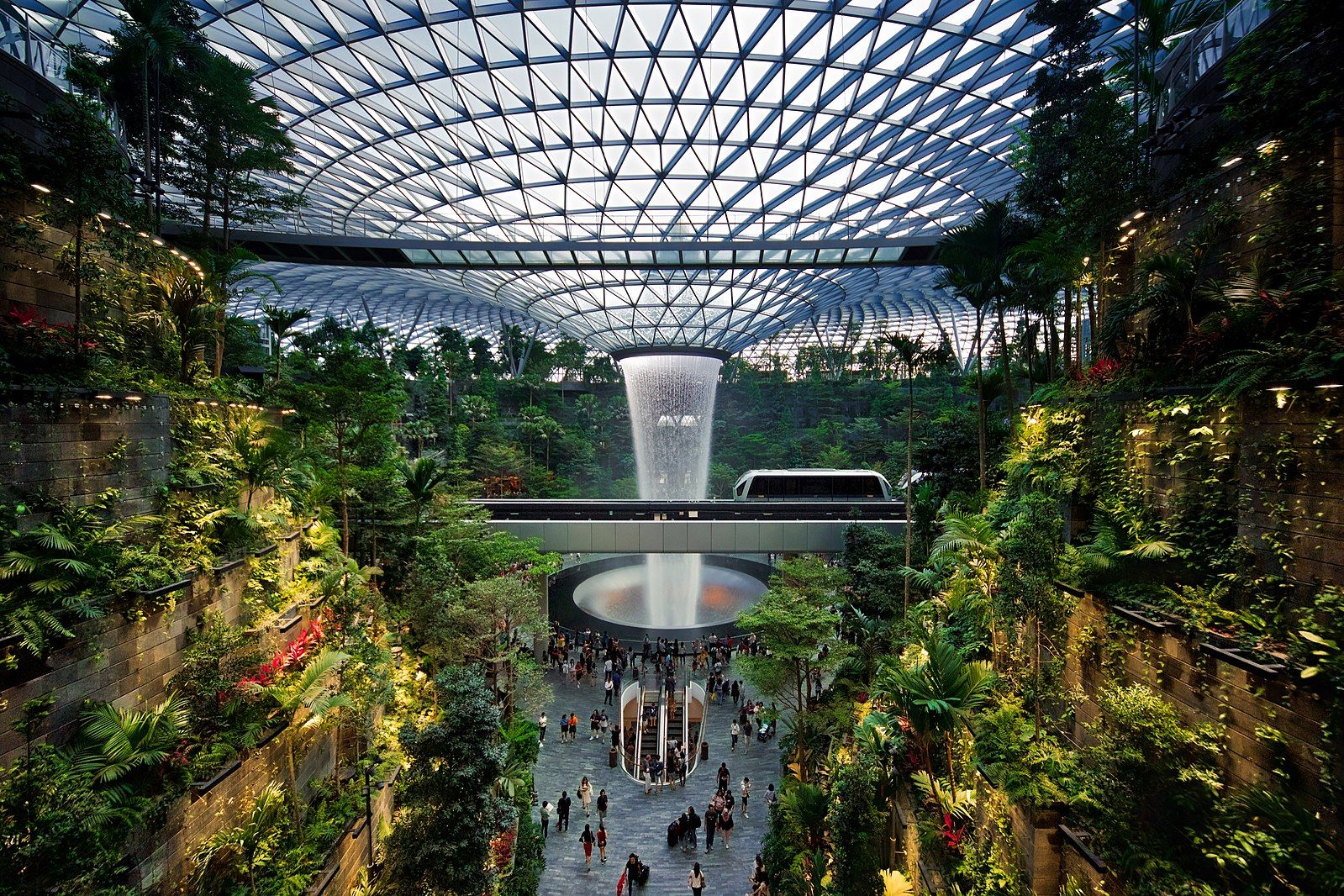
Design Tips
What is Biophilic Design?
Read on to learn the definition of biophilia and the fundamentals of biophilic design—described as “the future of design.” Also, take a look at examples of biophilic architecture from around the world.

Plants can enhance your home in so many ways—by purifying the air, reducing fatigue levels, and lifting your spirits with their mood-boosting “outdoorphins.” Of course, many people purchase plants for their decorative properties, as well. Whether colorful bromeliads, sculptural ferns, or unusually textured cacti, plants can serve as striking design elements in any living room, kitchen, or other interior space—just as they bring any exterior space to life, even modern residences and office buildings.
As biophilic design becomes more sought-after in architecture, interior design, and urban planning—many describe it as “the future of design”—follow our tips to finding it in your surroundings and bringing it into your home.
What makes interior design or architecture biophilic?
The word “biophilia” comes from two ancient-Greek roots, bio and philos, and signifies a love of living things and the natural world. In order to exemplify biophilic design, a building or a cityscape must incorporate references to nature, specifically in a way that promotes positive, loving feelings. The foundational text of biophilia, the biologist Edward O. Wilson’s treatise of the same name, holds that we actually need certain aspects of nature in order to be happy. Wilson once wrote, “Nature holds the key to our aesthetic, intellectual, cognitive and even spiritual satisfaction.” So, whether a space is biophilic or not largely depends on whether it makes you feel good!
Sociologists and designers have adapted Wilson’s views, and added new design principles, since he first shared his theory in the 1980s. Today, they emphasize that a cohesive, unified quality is also important in these spaces. Beyond bringing in plants or natural materials, there must be a sense that nature is somehow immersing or encompassing you. Also, engagement with the setting makes a space biophilic—it should not just build off, but reinforce, the innate fondness you feel toward nature. Finally, some biophilic designers have incorporated a sub-field called “biomimicry,” which focuses on borrowing design ideas from nature.
As you might imagine, there are many ways designers can work within these core principles, but the resulting spaces are typically easy to distinguish from others that are not biophilic. You will likely find not only plants and natural materials in these locales, but a naturalistic palette, images of nature, or shapes or silhouettes inspired by forms found in nature—like leaves, waves, and seashells. Some people also incorporate subtler nods to the natural world, like patinas that evoke worn stones or sea glass; geometric or mathematical sequences found in nature; or a general sense of forest-like contrast, layering, and variation.

Eden Project in Cornwall, England
Where can I find biophilic design around me?
Biophilic design can be found all over the world, largely because many traditional architectural styles showcase elements of it, such as natural materials and intuitive, harmonious design. For instance, treehouses, which have existed since ancient times; Japan’s minka homes, often featuring wooden frames, tatami mats, floor-to-ceiling windows, and gardens; Indonesia’s thatched-roof rumah adat; and Puglia’s stone trulli houses are arguably biophilic. There are even ancient geoglyphs etched into the Peruvian desert and biophilic “living bridges” throughout the Indian state of Meghalaya, woven in the 19th century from the roots of the Ficus elastica tree.

Living root bridges in village of Nongriat, Meghalaya, India
Somewhat newer examples, from the last 100 years, include the works of Antoni Gaudí throughout Barcelona, which were inspired by natural forms (fruits, seashells, turtle shells); Frank Lloyd Wright’s “Prairie-style” residences; the Ozark Mountains’ Thorncrown Chapel; “waterfall gardens” in New York and Seattle; and the Winter Garden at the World Financial Center. Plus, a new wave of biophilic-design works has quickly been taking over Manhattan, Madrid, Manila, and other international cities. Examples include the High Line; the headquarters of Adobe and Etsy; Milan’s Bosco Verticale towers; the Zaha Hadid-designed Guangzhou Opera House; and most hotel properties owned by 1 Hotels, Alila, COMO, and Hoshinoya.

Fallingwater by Frank Lloyd Wright, Mill Run, Pennsylvania
Another increasingly popular style that plays off of much older aesthetics—in this case, those of Belle Èpoque Parisian bistros, which featured indoor trees—is “arboreal” restaurant and bar design.
One of the most impressive examples of modern biophilic design is undoubtedly Singapore. When developing the main island, the government sought to channel a “garden city.” This resulted in thousands of biophilic structures and developments, as well as a larger sense of “biophilic urbanism.” Walking through the heart of the city, you will find a larger-than-life nature park, a plant-filled airport shopping complex called The Jewel, modernist bridges made from Malaysian wood, multi-story green walls, and even city buses with green roofs. Thanks to the recently published Green Plan, the city will continue developing in this way at least until 2030.

HSBC Rain Vortex in Jewel Changi Airport, Singapore
How do I bring biophilic design into my home?
It is easy to take your interior—or exterior—design in a biophilic direction. Start by choosing plants and greenery from the same genus, or those that feature similar colors, silhouettes, textures, or fragrances, to evoke immersiveness. For instance, these can include trees, ferns, flowers, or even mosses. From there, you can add whichever natural elements spark joy for you. Increase air circulation with a fan; introduce water elements, such as a small waterfall or fountain; or even bring fire into your space by lighting candles. Natural materials, such as wood, stone, cork, sisal, and jute, will also enhance the sense of naturalism.
Don’t forget that biophilic references can be very direct or literal—a nature painting or photograph, an outdoor view—or abstract and conceptual. Tiny adjustments like adding a fan or a humidifier; electing for a neutral or green- or blue-based palette; or referencing natural geometry, fractals, or Fibonacci sequences will connote nature for you and many of your guests on a subconscious level. Aesthetic, textural, and spatial “variability” will have a similar effect: placing a soft rug on a hardwood floor, pairing colors to feel unexpected or “kaleidoscopic,” or mixing and matching furnishings of differing heights and scales.

Words By The Sill
Empowering all people to be plant people—a collection of articles from The Sill's team of plant experts across a variety of plant care topics to inspire confidence in the next generation of plant parents. Welcome to Plant Parenthood™.
Do Some Plant Shopping